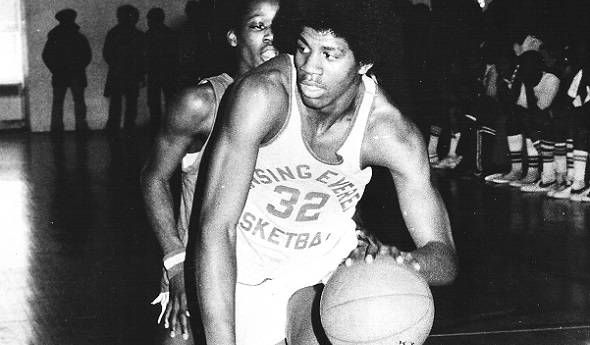
'Retro' Award Rewards 1st Hoops Legends
January 4, 2017
By Ron Pesch
Special for Second Half
Before the start of the MHSAA’s 2009 Boys Basketball finals, Basketball Coaches Association of Michigan director Tom Hursey stopped by my seat at Michigan State University’s Breslin Center to say hello.
Our chat would alter a decade of my Michigan winters.
Somewhere between hello and goodbye, our chat included conversation on one of my favorite BCAM ventures. In 1981, the Michigan High School Basketball Coaches Association, as BCAM was once known, named its first “Mr. Basketball.” I was two years out of high school when Lansing Eastern’s Sam Vincent edged Eric Turner of Flint Central for that first award. Designed to honor the state’s top senior, the award was named in honor of Detroit Free Press writer Hal Schram. “The Swami,” as he was nicknamed, Schram began covering high school sports for the newspaper in 1945.
The 2009 selection was 6-foot-9 Derrick Nix of Detroit Pershing. I mentioned my affinity for the Mr. Basketball program to Tom, but stated that I always thought it a crime that the award didn’t start years earlier, at least when Michigan hoop fans became infatuated with a kid nicknamed “Magic.”
Earvin Johnson prepped at Lansing Everett and was the talk of the state in basketball circles before becoming a household name during his time at Michigan State and with the Los Angeles Lakers. Earlier this year, ESPN named Johnson the greatest point guard to ever play the game. Tom noted that “Magic” was really the inspiration for the “Mr. Basketball” award.
Then I posed a question to Tom.
What about creating a “new” award, designed to honor those greats from the past?
As my hobby of researching the history of high school sports in Michigan and beyond had grown over the years, I’d found the Great Lakes state had always produced shining stars on the basketball court. The crime was that the “Mr. Basketball” award hadn’t been launched many years before.
Harry Kipke, was perhaps the state’s first true basketball star. He won 12 varsity letters at Lansing Central and guided the basketball team to the semifinal round of the state tournament in 1920 as a senior, before heading to the University of Michigan where he earned letters in football, basketball and baseball. After stops at the University of Missouri and Michigan State, Kipke would serve as Michigan’s football coach, guiding the Wolverines to two national gridiron championships.
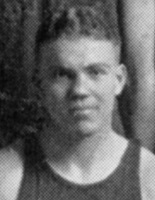 As a junior, the basketball antics of Grand Rapids Union’s Royal “Red” Cherry captured the state’s attention when he led Union to the state basketball championship. Considered the best all-around player of the tournament, Cherry led the team to a second consecutive title as a senior. He, too, attended Michigan, earning laurels on the basketball court and the baseball diamond.
As a junior, the basketball antics of Grand Rapids Union’s Royal “Red” Cherry captured the state’s attention when he led Union to the state basketball championship. Considered the best all-around player of the tournament, Cherry led the team to a second consecutive title as a senior. He, too, attended Michigan, earning laurels on the basketball court and the baseball diamond.
Many other legends of the hardcourt populated Michigan’s past: Saginaw’s Ernie Thompson; the Burton brothers, M.C. and Ed, of Muskegon Heights; Detroit Pershing’s Ralph Simpson and Spencer Haywood; Dave DeBusschere of Detroit Austin Catholic; Willie Betts and Blanche Martin of River Rouge; Ron Kramer of East Detroit; Benton Harbor’s Chet Walker and L.C. Bowen.
After a few weeks of research, discussion and thought, Tom agreed, and over the next several months the framework for the “Retro Mr. Basketball” project was developed
The idea was to try and mimic the current model. Only seniors, and their high school basketball careers, should be considered. While any “senior” player would be eligible, a ballot of the state’s elite would comprise the candidates for the award. Like their modern-day equivalents, where the events of life that would follow high school graduation had yet to occur, post-high school life would be disregarded as much as possible for “Retro” candidates.
Finally, the program would follow a 10-year arc, kicking off in the spring of 2010. This December marks my eighth year of research tied to the mission. Two more will follow.
Since the Schram “Mr. Basketball” award began in 1981, the “Retro” award would honor basketball players from the years 1920 through 1980. That first year, a ballot comprised of players from the years that ended in zero - 1920, 1930, 1940, 1950, 1960, 1970 and 1980 – was created. A senior for each year would be named the winner of the “Retro” award. That meant with the selection of “Mr. Basketball” and the six “Retro” winners for the years 1929, 1939, 1949, 1959, 1969 and 1979, scheduled for the spring of 2019, BCAM would be able to point to a combined list of Mr. Basketballs totaling 100 of the state’s finest.
To identify each year’s award winner, a committee of veteran BCAM members was formed to study a ballot of candidates and select a winner.
Technology, combined with scanning old-fashioned reels of microfilm, has helped with research of potential candidates. In those very early years, personal statistics were rarely kept. Rather, an assessment of a player’s skills, tied to the position he played, often served as a means to identify an area’s top athletes. Tournament play was often the only time an athlete’s abilities were on display to a larger audience. Scouring newspaper articles for all-tournament teams and yearbooks for additional details and years of study helped uncover the state’s top senior players. Understanding the game and its evolution was important. The center jump after each basket emphasized the importance of a tall, skilled center in those games played before the winter of 1938-39.
Beginning in 1935, all-state teams began to appear in state newspapers. Eventually, the Detroit Free Press, the Detroit Times, the Detroit News, The Associated Press and even United Press International became involved in identifying the state’s top basketball players and naming all-state squads. Much work is involved in parsing the 15,811 names (not including honorable mentions) found in those lists. When duplicates are removed, the names of 8,430 prep players remain spread over the 61 years that mark the “Retro” field of possible candidates.
Research to identify seniors, players named by multiple media outlets, and mini biographies are compiled for the top players. The field of candidates is then narrowed to 10 or fewer. Over state championship weekend, the ballots are brought to the BCAM committee for discussion, and finalists are named for each year. Finally, one player is named for each eligible season.
Like the modern day award, the selection may create some controversy. Some amazing ballplayers have landed on the finalist list, but were denied the Hal Schram Mr. Basketball award: Traverse City’s Dan Majerle, Roy Marble of Flint Beecher, Detroit Southwestern’s Jalen Rose, Detroit Northern’s Derrick Coleman and Draymond Green of Saginaw are among a few.
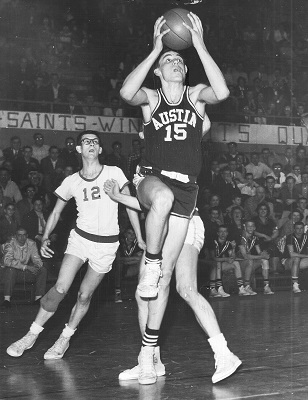 The same applies to the “Retro” list. Fennville’s Richie Jordan, Robert “Bubbles” Hawkins from Detroit Pershing, Dennis Bankey of Detroit St. Thomas, Bill Chmielewski of Detroit Redeemer, Highland Park’s Terry Duerod and Detroit Kettering’s Lindsay Hairston all have been honored on the finalist lists, but fell short of the top prize.
The same applies to the “Retro” list. Fennville’s Richie Jordan, Robert “Bubbles” Hawkins from Detroit Pershing, Dennis Bankey of Detroit St. Thomas, Bill Chmielewski of Detroit Redeemer, Highland Park’s Terry Duerod and Detroit Kettering’s Lindsay Hairston all have been honored on the finalist lists, but fell short of the top prize.
In many cases, Michigan was loaded with prep talent – it’s tough to name Roy Marble Mr. Basketball when Flint Northwestern’s Glen Rice was on the same ballot, or Rose the state’s best when Country Day’s Chris Webber was another candidate. While the “Fennville Flash” amazed the state with his eye-popping statistics in 1965, Bowen led Benton Harbor to back-to-back Class A titles. Named an all-state basketball player as a junior, Hairston grew an inch and improved his game as a senior, but Pontiac Central’s “Campy” Russell dominated headlines that season, and was the “Retro” Mr. Basketball selection for 1971.
In some cases, it’s a challenge to look at the final balloting results without judging selections based on future basketball success. That certainly is the case with 2008. That season, Michigan’s Mr. Basketball award went to 6-foot guard Brad Redford, who posted incredible back-to-back high school seasons at Frankenmuth. Runner-up to the award that year was Saginaw’s Green. Considering Green’s success in the NBA, that’s hard for many to believe.
While the debates may never be settled, the beauty of Schram and “Retro” Mr. Basketball balloting can be found in the argument. With those disputes, people recall, research and learn about Michigan’s incredible prep basketball past.
The remaining three years of the “Retro” project will include many more legends of Michigan High School basketball, including, among others, DeBusschere, Walker, Haywood and Simpson.
This season, that “Magic” kid will be one of the names among the mix. Forty years after high school graduation, will he earn the honor that eluded him in high school, only because the honor didn’t yet exist?
 Ron Pesch has taken an active role in researching the history of MHSAA events since 1985 and began writing for MHSAA Finals programs in 1986, adding additional features and "flashbacks" in 1992. He inherited the title of MHSAA historian from the late Dick Kishpaugh following the 1993-94 school year, and resides in Muskegon. Contact him at [email protected] with ideas for historical articles.
Ron Pesch has taken an active role in researching the history of MHSAA events since 1985 and began writing for MHSAA Finals programs in 1986, adding additional features and "flashbacks" in 1992. He inherited the title of MHSAA historian from the late Dick Kishpaugh following the 1993-94 school year, and resides in Muskegon. Contact him at [email protected] with ideas for historical articles.
PHOTOS: (Top) Lansing Everett’s Earvin Johnson drives around a defender during his celebrated high school career. (Middle) Grand Rapids Union’s Royal “Red” Cherry. (Below) Detroit Austin Catholic’s Dave DeBusschere drives to the hoop as an opponent gets in position to rebound. (Photos from MHSAA and Ron Pesch historical files.)
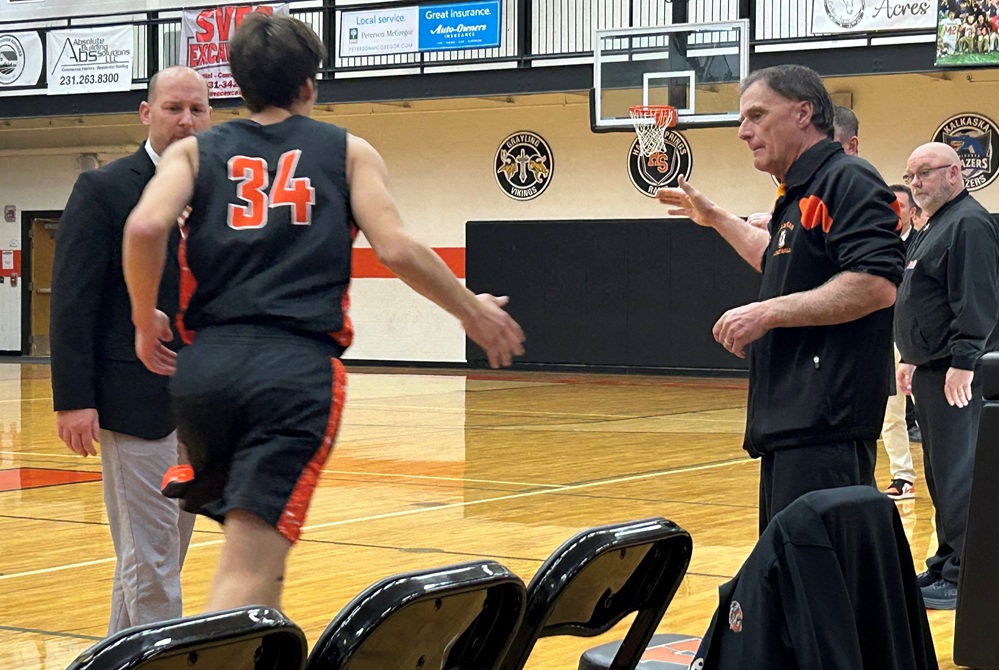
'Scott Hancock Court' Celebrates JV Coach's 50 Years Building Up Cheboygan Hoops
By
Tom Spencer
Special for MHSAA.com
December 19, 2025
It’s been a remarkable season so far for the Cheboygan boys basketball players and coaches.
 The undefeated varsity Chiefs are looking ahead to the new calendar year and their next opponent, Northern Shores Conference rival Elk Rapids. They also have the District tournament they’ll be hosting in February in their sights.
The undefeated varsity Chiefs are looking ahead to the new calendar year and their next opponent, Northern Shores Conference rival Elk Rapids. They also have the District tournament they’ll be hosting in February in their sights.
But Scott Hancock is already looking ahead to the classes of 2035, 2036, 2037 and 2038. And nobody can blame him.
Hancock, a 1976 graduate of Cheboygan, has no intentions of ending his coaching career soon. He’d like to make it long enough to coach his youngest grandson Lincoln Hancock, who is already playing youth basketball in Cheboygan.
And while the Chiefs are finding success this year with the foundation Hancock helped build, the veteran coach can’t help but dream about his youngest grandson playing at Cheboygan High School.
“As a kindergartner he’s in Saturday basketball, and he loves the game,” Hancock said. “God willing, I plan to be there for him.”
Hancock is his 50th season in Cheboygan program. He enjoyed the opportunity to coach his two sons Nick and Brian, both school record holders. He’s also enjoyed coaching his grandson, Landon Gahn, the Chiefs’ junior point guard. Gahn played junior varsity for Hancock his freshman year and moved up to the varsity his sophomore season.
All but two of Hancock’s season were spent as the JV coach. He took the varsity job on an interim basis when current Cheboygan varsity coach, Jason Friday, was playing for the Chiefs in the late 1990s.
On Dec. 9, the Chiefs officially named their home court the Scott Hancock Court. His family was on hand as well as current and former Northern Michigan coaches.
Hancock’s JV team lost that night to Alpena in overtime. The score was 50-50 when the fourth quarter buzzer sounded.
“Looking back, we should have just called the game at the end of regulation,” Hancock admitted. “I got a bunch of great kids this year. and it was a tough loss because it was an overtime loss.”
 It was the only loss the Chiefs’ JV team has encountered so far this year. But wins and losses are not the focus of Hancock’s level of the program.
It was the only loss the Chiefs’ JV team has encountered so far this year. But wins and losses are not the focus of Hancock’s level of the program.
“I don't get too carried away with the wins and losses — I know what I'm there for,” Hancock explained. “I'm there to teach the kids to get them ready for the varsity.”
Hancock is considered by many to be the best coach in Cheboygan history. No counter argument can be found among the current varsity players and their head coach.
“He's the best coach that I've ever had — no bias because he's my grandfather,” acknowledged Gahn, who was found cheering from the bench as the Chiefs secured the victory earlier this week at Kingsley. “He teaches everything about basketball, but he doesn't really preach as much as he demonstrates being a good person. Just looking at him and what he does every day, you can just tell he's the guy that's doing everything right, even though nobody's watching.”
Senior Carson Kiefer helped lead the way for Cheboygan's varsity at Kingsley. He scored 12 points, with two 3-pointers. Kiefer credits Hancock for helping him improve his confidence on the court.
“I think he cares more about the person individually outside of sports,” said Kiefer, who is averaging 16 points per game. “It's fitting that he's a JV basketball coach, helping build players’ skills and confidence.”
Kiefer’s twin brother, Andrew, singled out Hancock’s commitment to the school.
“He's not just a school figure,” said Andrew Kiefer, who is averaging just under 12 points per game. “He is not just the coach. He is a community guy all-around.”
The Chiefs varsity is getting strong contributions from their juniors this season. Nolan Schley is averaging 12 points per game, and he’s second on the team in rebounding. And Gavin Smith is leading the team in rebounds and assists, collecting almost 10 boards and four dishes per game.
The Kiefers, Smith and Schley are part of the reason Friday is not surprised by the 6-0 start and seeking a District title for the first time since 2015. The last time Cheboygan won a conference championship was 2020, playing in the Straits Area Conference during Friday’s first season as boys head coach after previously coaching the girls varsity.
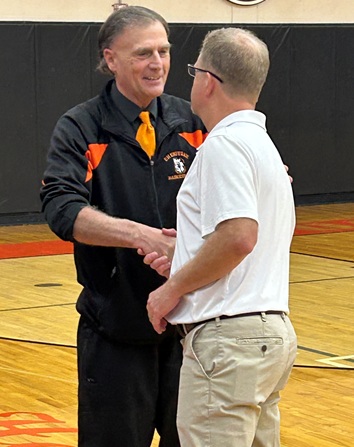 “We knew that our junior and senior classes had some talent in there,” Friday noted. “The boys really want to win a District championship, as well as a conference championship. The boys put a ton of time in the offseason to do everything they can to get over that hump and get both a conference and District championship.”
“We knew that our junior and senior classes had some talent in there,” Friday noted. “The boys really want to win a District championship, as well as a conference championship. The boys put a ton of time in the offseason to do everything they can to get over that hump and get both a conference and District championship.”
Cheboygan will host a Division 2 District tournament this season after falling 50-48 in last year’s Division 3 District Final – also at home. The Chiefs face a field including league foes Grayling, Kalkaska and Kingsley as well as Ogemaw Heights and Sault Ste. Marie. Cheboygan topped the Sault 67-43 earlier this year and will play a home-and-home series with Grayling in January.
For now, though, the Chiefs are thinking only about Elk Rapids. Cheboygan started 7-0 last year before falling to the Elks to start the new year.
“We're approaching 7-0 again, so having them coming up here on the schedule, we’re definitely going to be practicing a little harder and watching maybe a little more film and just preparing for the game more seriously,” Gahn said. “Coach Friday was saying last year that he can't remember the last time the team started off 8-0, and it was our eighth game that we lost to Elks. So we're hoping to beat them next time we play.”
The court naming did not come as a surprise to Hancock. He was informed in a meeting with Marty Mix, Cheboygan principal. He thought he had some papers to sign and was surprised his family was waiting in the office.
“He was completely shocked, and Coach Hancock doesn't like attention,” said Friday, who is also the school’s athletic director and was in the notification meeting. “Scott always likes to be in the background, and he handled it quite well.”
And while his signature was placed on the court opening day this year, he points out the Hancock legacy started way before him.
“I'm more proud of the Hancock name on there more than the Scott part of it,” said Hancock, who also serves as the city’s as the parks and recreation director. “Believe me, my dad was a Chief through and through. He passed in 2006. I know he was there in spirit with us looking down.”
 Tom Spencer is a longtime MHSAA-registered basketball and soccer official, and former softball and baseball official, and he also has coached in the northern Lower Peninsula area. He previously has written for the Saginaw News, Bay County Sports Page and Midland Daily News. He can be reached at [email protected] with story ideas for Manistee, Wexford, Missaukee, Roscommon, Ogemaw, Iosco, Alcona, Oscoda, Crawford, Kalkaska, Grand Traverse, Benzie, Leelanau, Antrim, Otsego, Montmorency, Alpena, Presque Isle, Cheboygan, Charlevoix and Emmet counties.
Tom Spencer is a longtime MHSAA-registered basketball and soccer official, and former softball and baseball official, and he also has coached in the northern Lower Peninsula area. He previously has written for the Saginaw News, Bay County Sports Page and Midland Daily News. He can be reached at [email protected] with story ideas for Manistee, Wexford, Missaukee, Roscommon, Ogemaw, Iosco, Alcona, Oscoda, Crawford, Kalkaska, Grand Traverse, Benzie, Leelanau, Antrim, Otsego, Montmorency, Alpena, Presque Isle, Cheboygan, Charlevoix and Emmet counties.
PHOTOS (Top) Longtime Cheboygan boys basketball JV coach Scott Hancock sends a starter onto the floor during introductions before a game against Kingsley. (Middle) The Hancock family takes a photo with Scott’s newly-added signature on the floor. From left: Landon Gahn, Brian Hancock, Olwyn Hancock, Scott Hancock, Marjean Hancock, Lincoln Hancock and Nick Hancock. (Below) Scott Hancock shakes hands with a Kingsley assistant coach. (Family photo courtesy of Chris Murdick. Other photos by Tom Spencer.)

